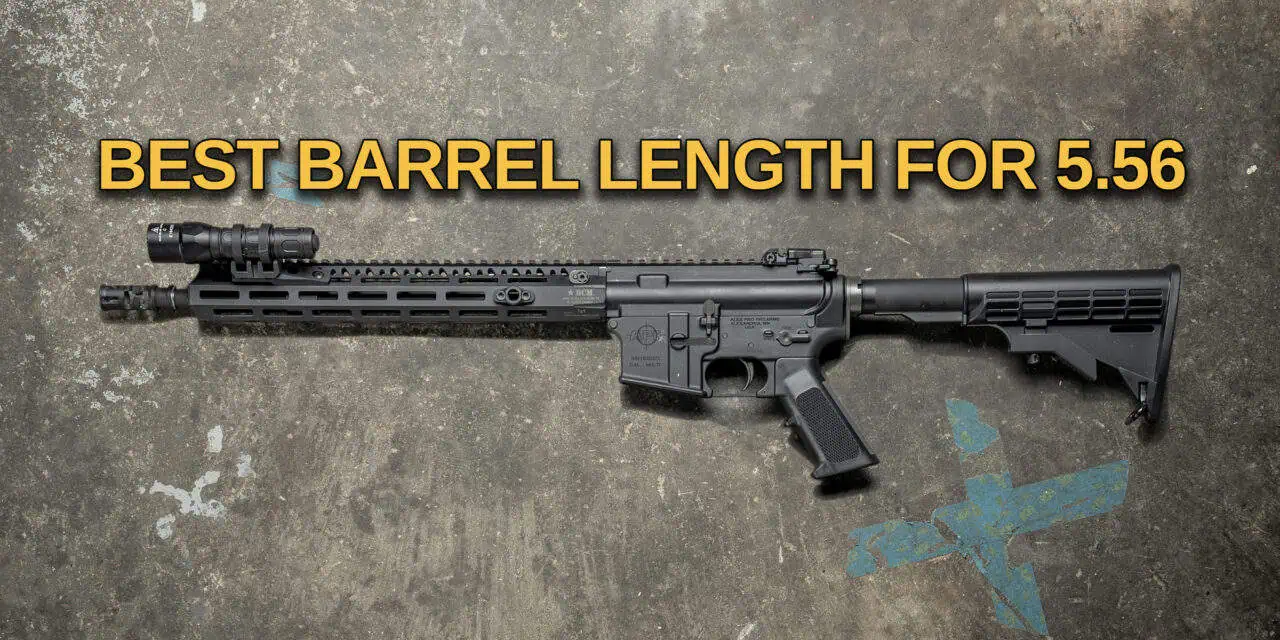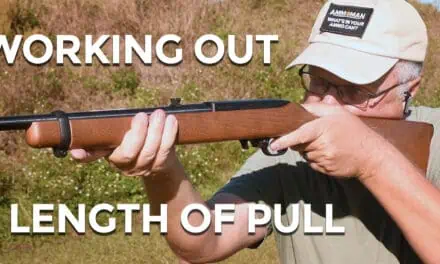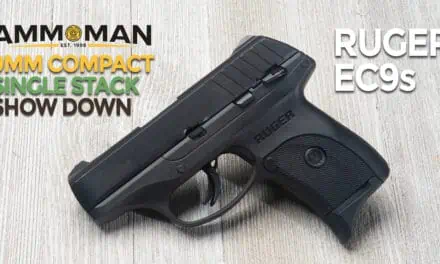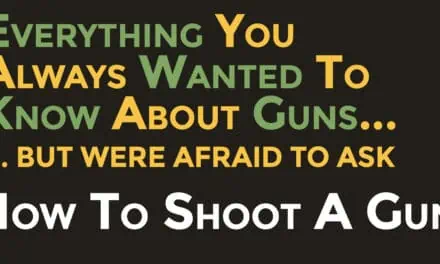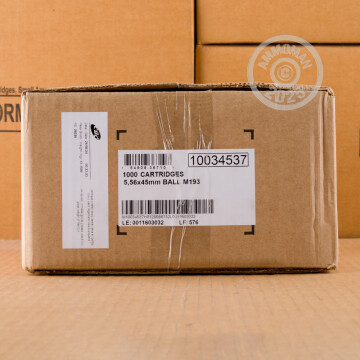Barrel length plays a central role in determining both performance and handling of a rifle. If you’re searching for the best barrel length for 5.56 ammo, you’re in the right place.
So, you want to optimize your arsenal with a limited budget. Creating a “do everything” rifle is where most people end up. Looking at the most common offerings and general needs, let’s break down which is truly the best option for you!
Best Barrel Length for 5.56
We believe the best barrel length for most 5.56 shooters is 14.5-inches. This allows you ample barrel to generate velocity and accessorize as you see fit without getting too large you won’t be able to maneuver with it.
Background on 5.56 Barrels
The AR-15 platform was originally developed as the ArmaLite AR-15 in the late 1950s. It was designed with a 20-inch barrel to optimize the ballistics of the new 5.56x45mm NATO cartridge. This barrel length was chosen to deliver high velocity, flat trajectory, and effective terminal performance at long distances. It followed trends of that time in regards to length, while experimenting with the newer concept of intermediate cartridges. As the ArmaLite platform evolved, different barrel lengths were introduced to adapt as requirements of the system progressed during war-time.
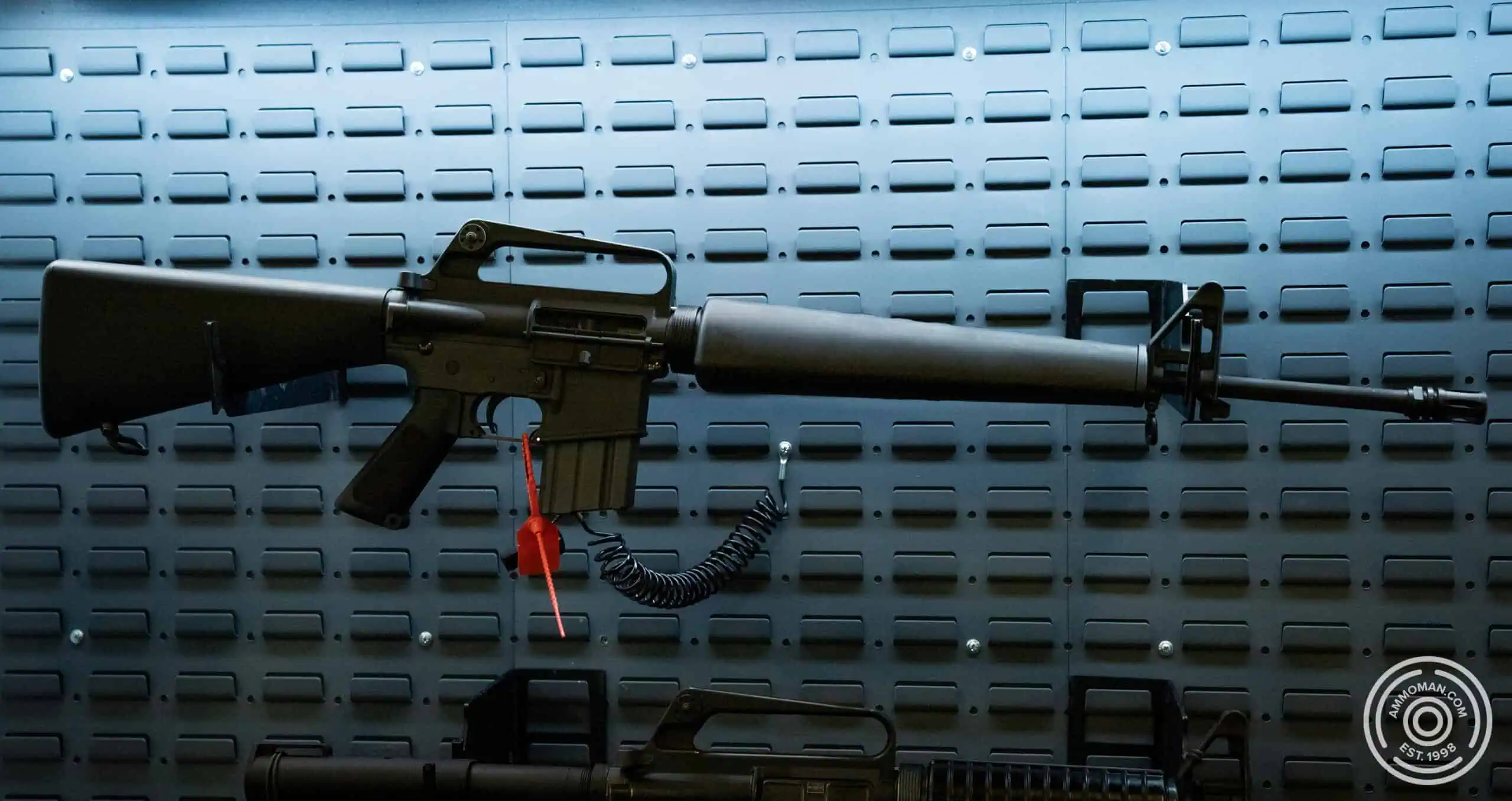
Palmetto State Armory 20″ M16A1 retro.
How Does a 5.56 Achieve Fragmentation?
The 5.56 bullet relies on velocity to achieve fragmentation upon impact on target. This is a factor for both hunting and defense. Fragmentation is generally regarded as achievable at 2,500 FPS. However, even without fragmentation the 5.56 cartridge can still “tumble” inside a target causing lethal damage.
Barrel Length Options for 5.56 NATO
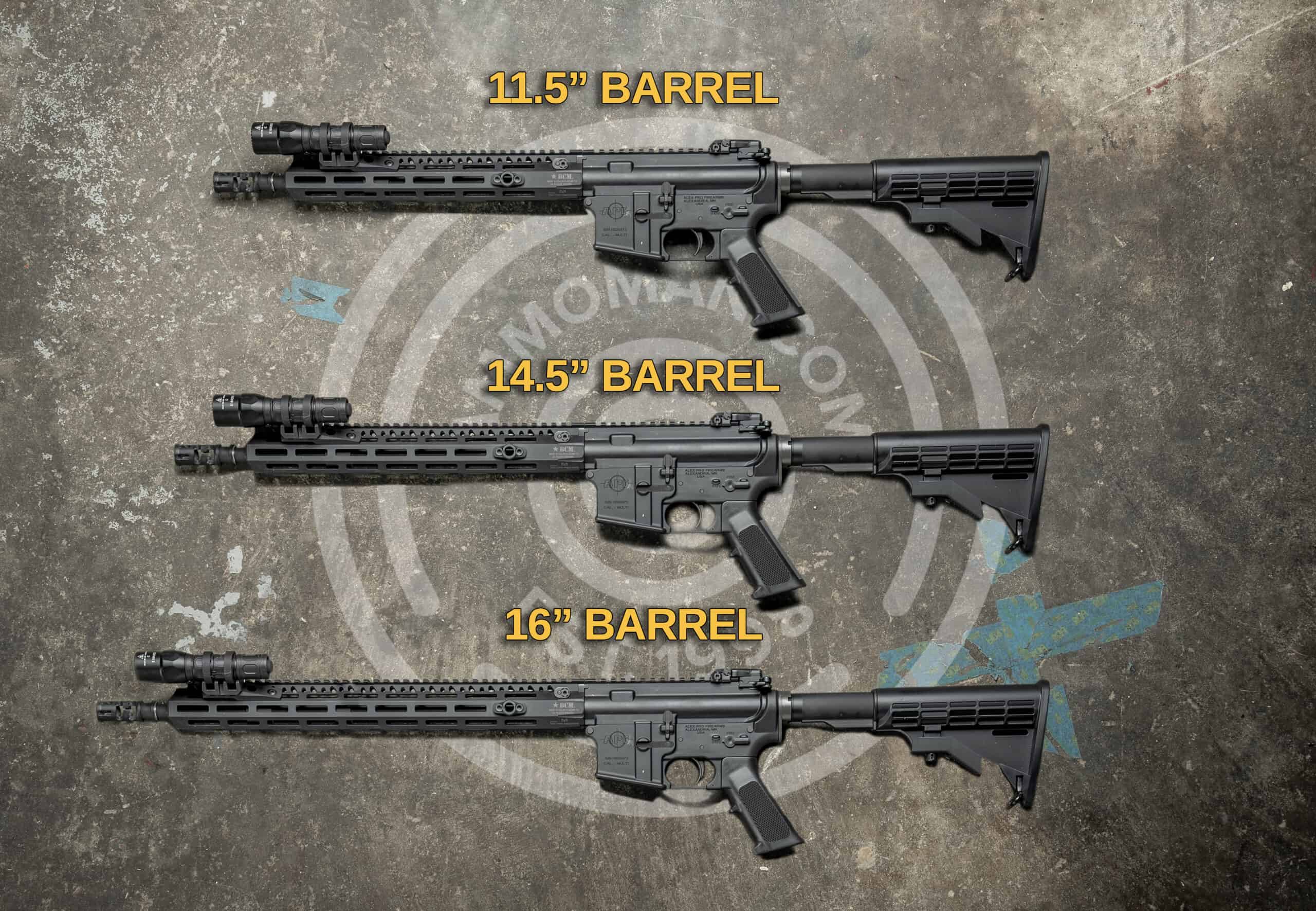
The difference between barrel lengths is visually small, but the felt difference is much greater.
20-Inch Barrel
The original 20-inch barrel offers optimal performance with the 5.56×45 NATO cartridge. This length typically reaches muzzle velocities of approximately 3,200 fps with a 55-grain round. This allows bullets to reach fragmentation speeds at ranges up to 500 yards. All while maintaining accuracy.
14.5-Inch Barrel
With the 1980s came the development of the M4 carbine. A 14.5-inch barrel that became the military’s standard for decades to come. This length is adaptable, mobile and effective at mid-range. The 14.5-inch barrel provides a muzzle velocity of around 2,800-2,900 fps and achieves effective fragmentation within 150-200 yards.
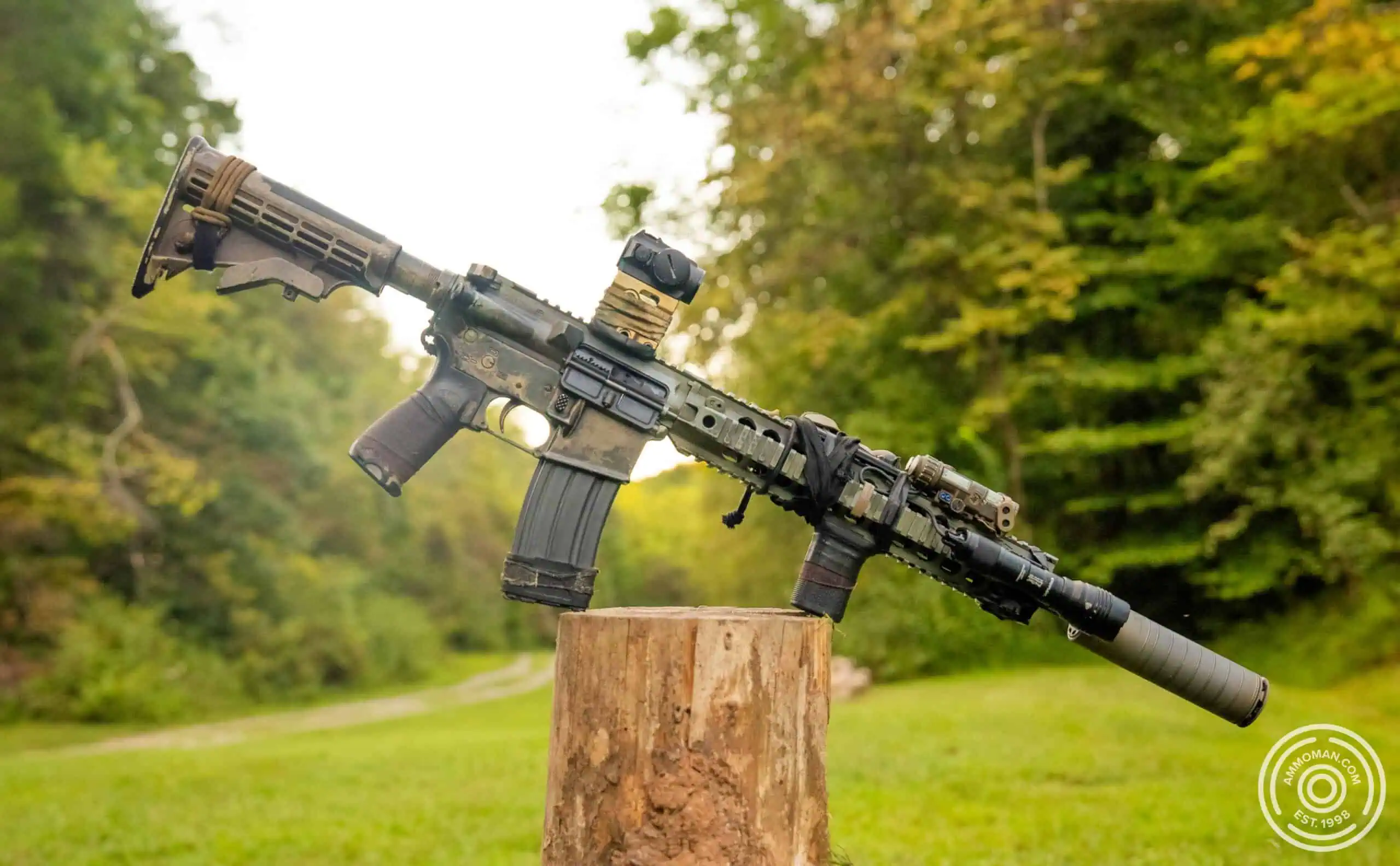
14.5″ suppressed AR15.
11.5-Inch and Other Short Barrels
Shorter barrels in the 10.5-inch to 11.5-inch range became popular among special operations forces and law enforcement due to their extreme maneuverability in urban and close-quarters settings. An 11.5-inch barrel typically drops to around 2,500-2,600 fps at the muzzle, and fragmentation reliability decreases after roughly 100 yards.
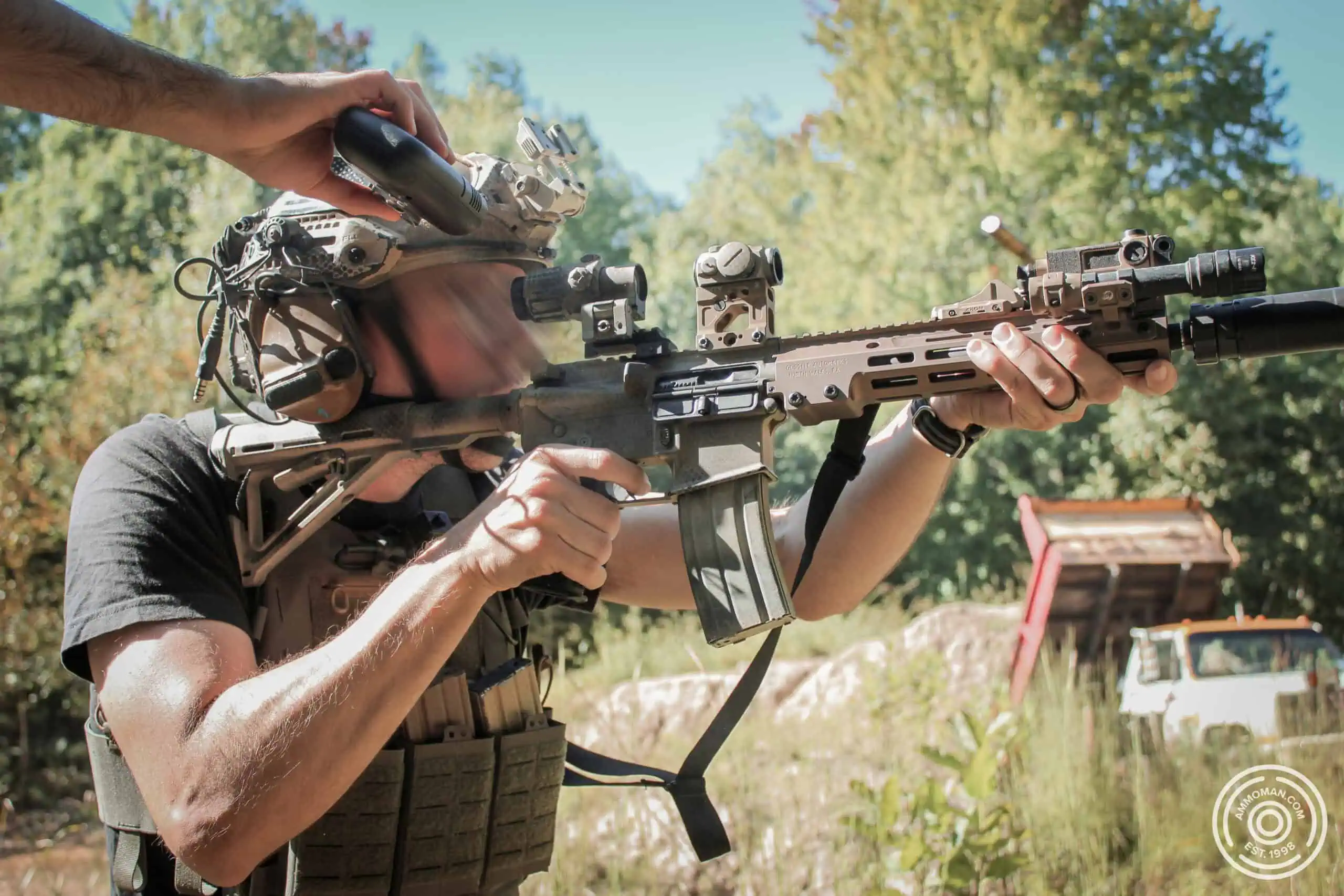
Shooting an 11.5″ AR15 suppressed.
Velocities Chart for 5.56 Barrels
In order to find out which length is best for you, let’s compare performance and usability to that of other barrel lengths across key factors: Barrel length, muzzle velocity and effective range for fragmentation.
| Barrel Length | Muzzle Velocity | Range of Fragmentation |
|---|---|---|
| 20" | High (3,200 FPS) | 300+ yards |
| 16" | Moderate-High (2,800-2,900 FPS) | 250 yards |
| 14.5" | Moderate (2,800 FPS) | 150-200 yards |
| 11.5" | Lower (2,600 FPS) | <100 yards |
| 10.5" | Low (2,500 FPS) | 50-75 yards |
This test was performed with Winchester 55 grain M193 ammo.
Considerations
So, which barrel length suits you best? Just like with the ballistics chart, there are a few considerations before deciding. How far do you need to shoot accurately at? Are you intending to be carrying the rifle long distances, or just shooting from a bench? Will you be adding accessories to your rifle to compliment its capability? Let’s start with the question of distance.
Engagement Distances
The general mindset of a lot of people is that “urban” = short barrel and “wooded” or “rural” = long barrel. I would contest this by pointing out that in most cities that operate on a grid system, you have very long sight lines within those urban and suburban environments. Next time you’re in your town on a main street, try to estimate how far you can see. Now imagine if you’re in some of the multi-story buildings in a city. In the midwest where I (Tyler) live, having sight lines of 500+ yards isn’t uncommon.
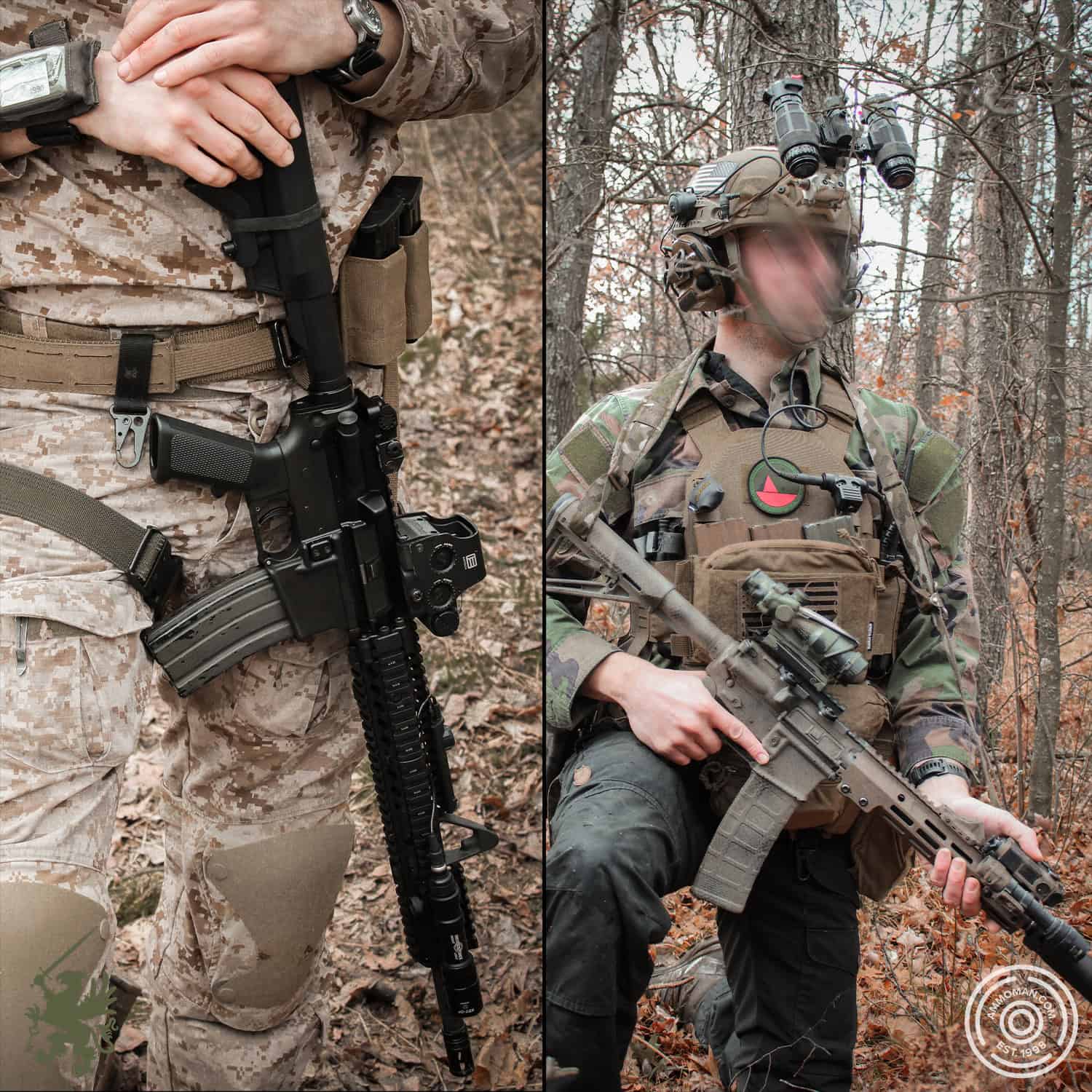
16″ unsuppressed (Left) and a 11.5″ suppressed (Right). Both have their place.
If I go into the woods, it is comprised of generally dense forests. Inside the tree line, my greatest line of sight is within 100 yards until I come to a large field or clearing. Then it can be 200-400 yards on average.
If you have ever gone on a patrol in the military or during training, you know that maneuverability is key. This is especially important with body armor, a ruck and all the gear you’re expected to carry for your squad. It gets cumbersome quick. Even in mountainous environments where the ability to get to a crest and see over a large area, getting there with the ability to be effective is obviously a consideration.
Attachments
There are a multitude of attachments that you can and will most likely want to add to your rifle. Not every attachment is made equal, and most definitely not helpful. But there are some things you can add that will bring a strong capability to your rifle that we (Kenneth and Tyler) think you should consider.
Lights, Lasers and Slings
As I (Kenneth) have mentioned in a previous article about my AR-15 Hog Hunting Rifle, my 14.5″ rifle was set up very similar to what I prefer for a “fighting” or general purpose setup. Adding a light, laser, sling, thermal device or suppressor, will require rail space and make the rifle heavier.
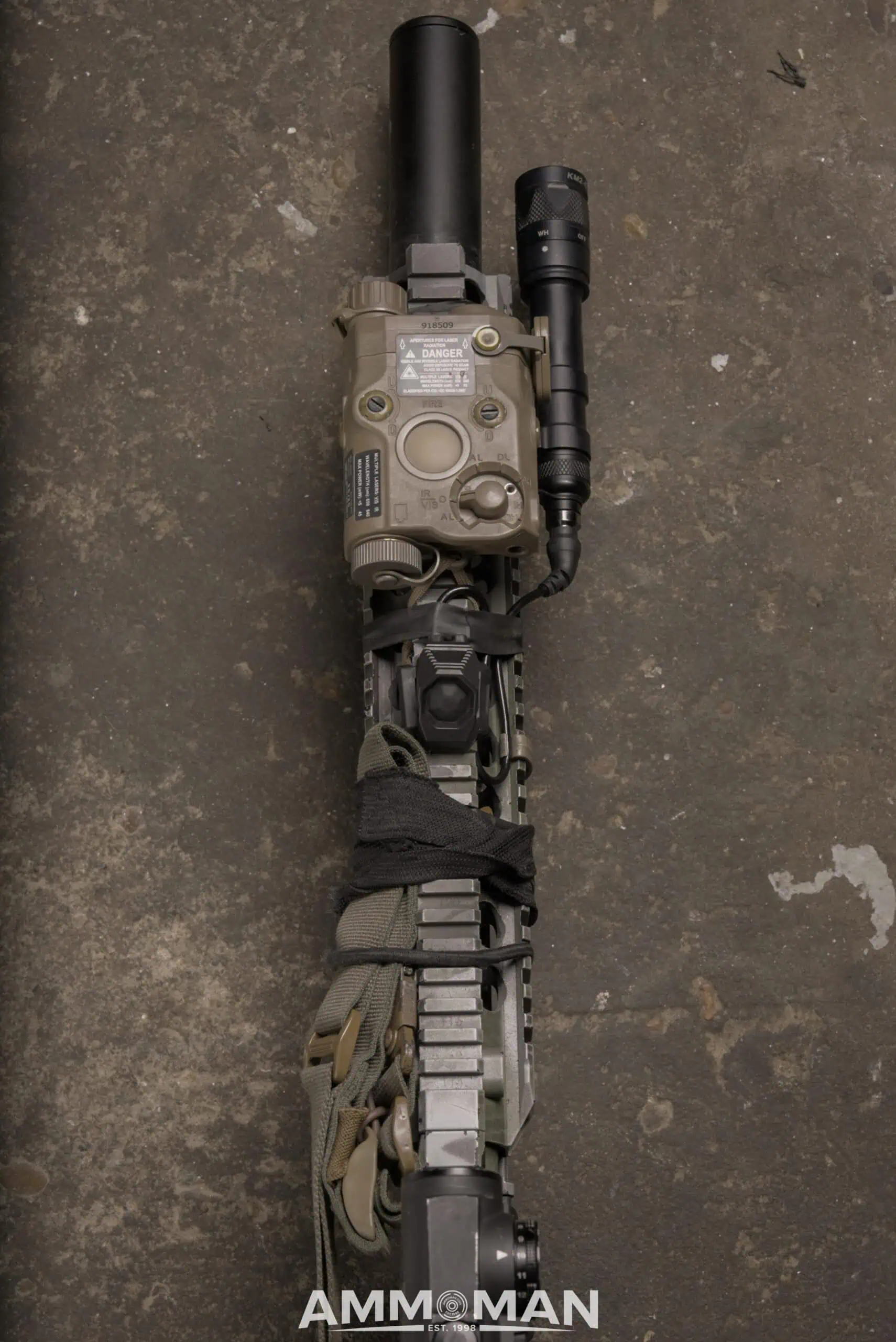
14.5″ rifle equipped with light, laser, and suppressor.
Suppressors
When deciding which attachments will make the most difference, both Tyler and I share the opinion that a suppressor should be high on the list of every gun owners “buy” list. They’re becoming more commonplace in both military and civilian use for a number of reasons.
- greatly reduces flash signature
- slightly increases muzzle velocity
- reduces sound to varying degrees
In the future, we are going to talk more in depth on the benefits of suppressors and what to consider when getting ready to buy one.
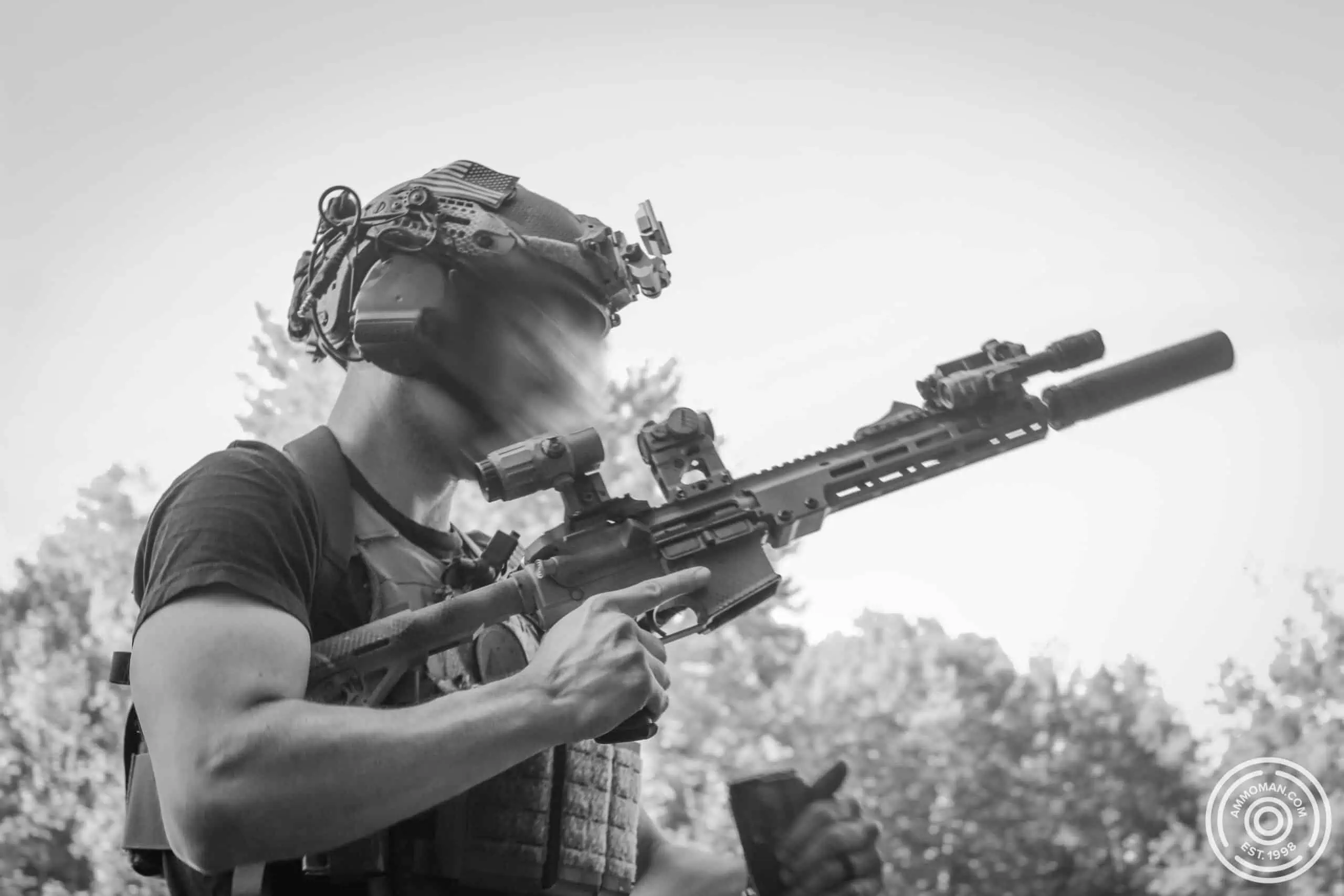
Reloading a suppressed AR15.
Getting a suppressor brings all of these benefits at the cost of added length. However, adding a suppressor to a 20” barrel for general use is almost comical and takes a lot of training to make it usable in tight spaces. This is where the short barrels like 10.5” and 11.5” really shine.
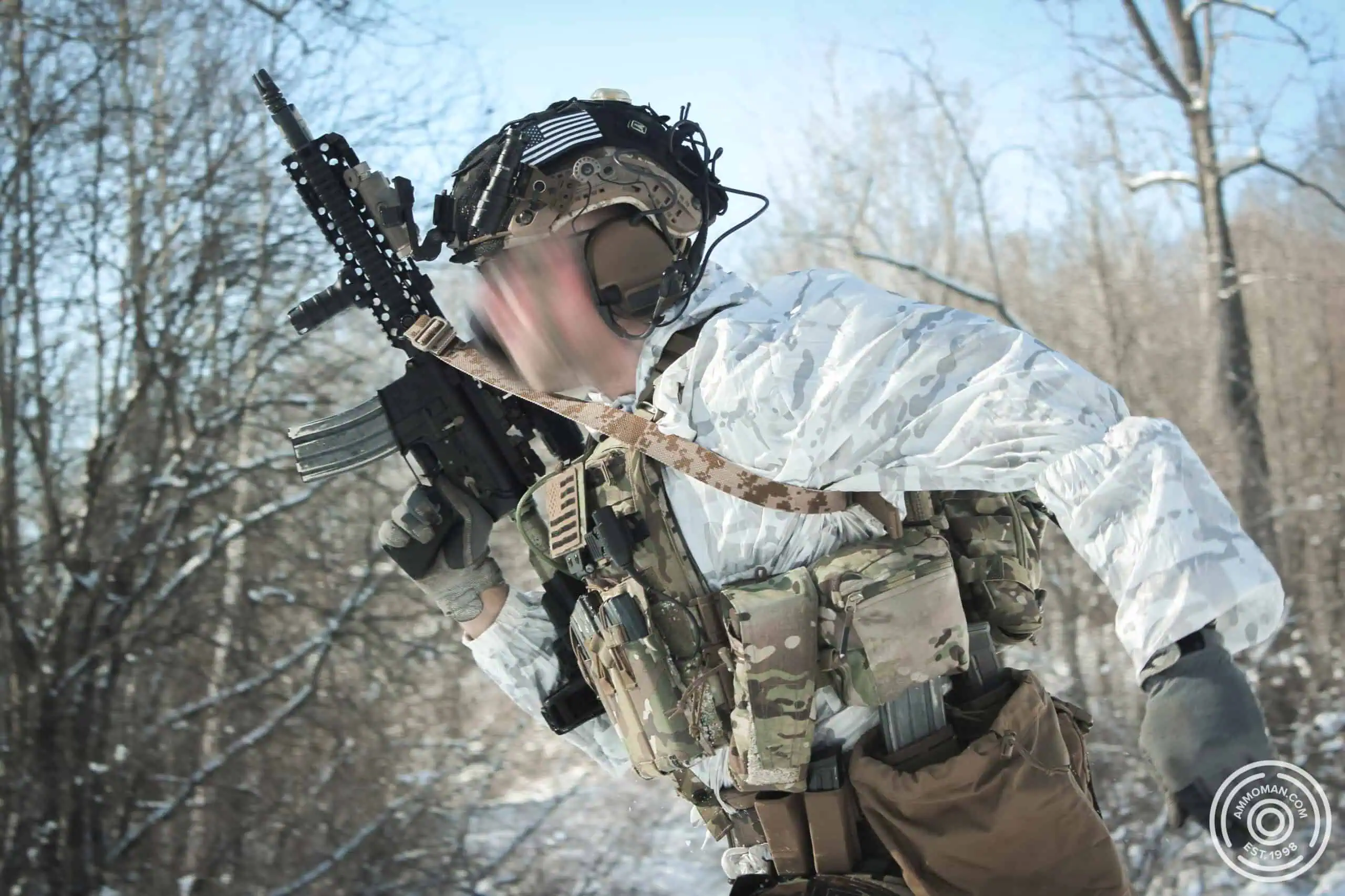
Here, Tyler is bounding with a very wieldy 12.5″ rifle.
Looking at a 14.5” with a suppressor is about the same length as a 20” unsuppressed, but the benefits of the suppressor make the 14.5” with suppressor outweigh the benefits of a 20” unsuppressed.
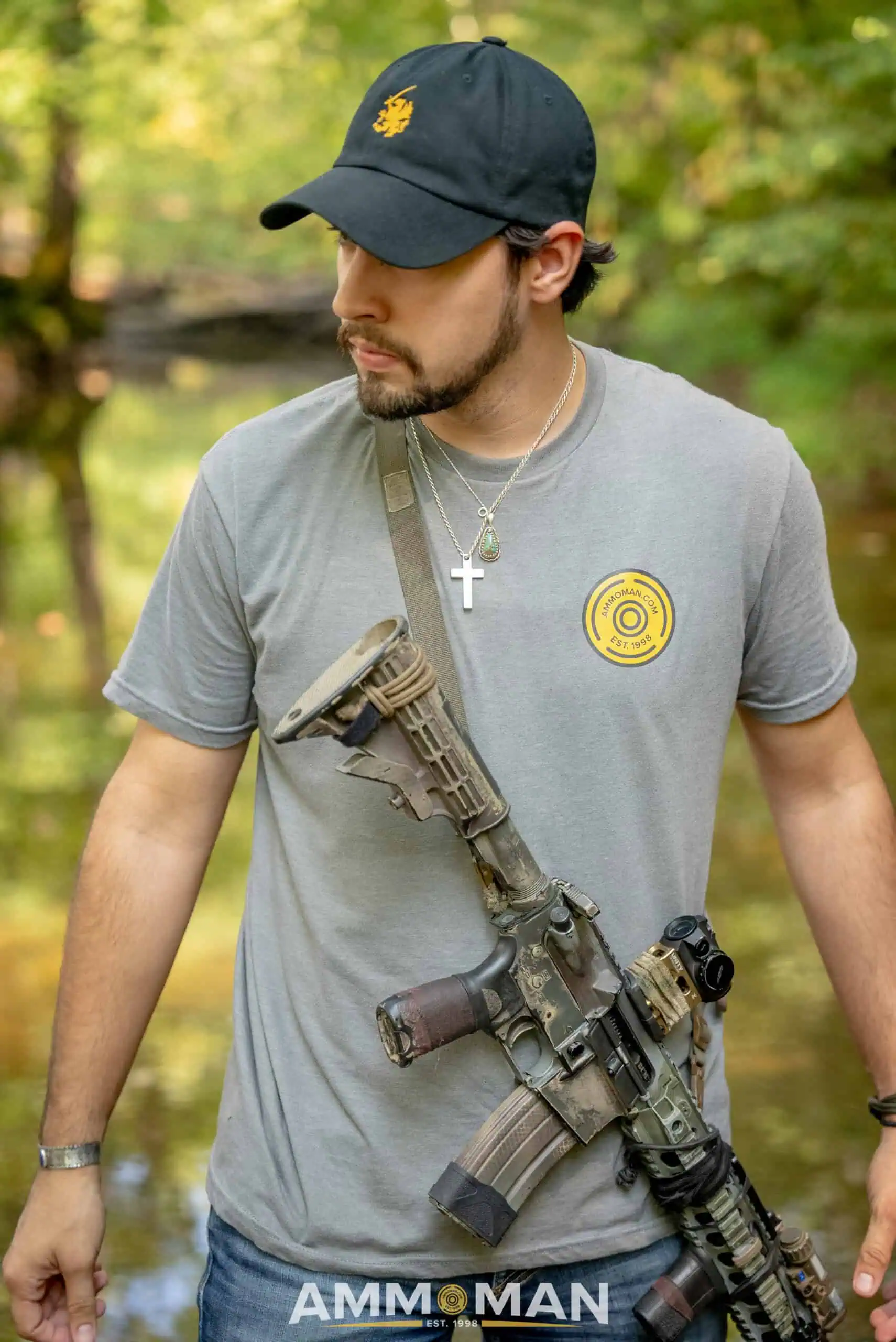
Kenneth, with his 14.5″ suppressed rifle. Featuring a Long House cap from Tyler.
Why We Prefer The 14.5-Inch Barrel
We feel that the 14.5-inch AR-15 barrel is suitable for a wide variety of environments. Demonstrated from its wide use and preference from the 1980s to present day. From the M4A1 to the Block II program, and modern day SOCOM units being issued the 14.5” URGI. The 14.5″ has proven its value in urban areas of Iraq and in thick forests of Afghanistan as well as rocky mountainous desert regions.
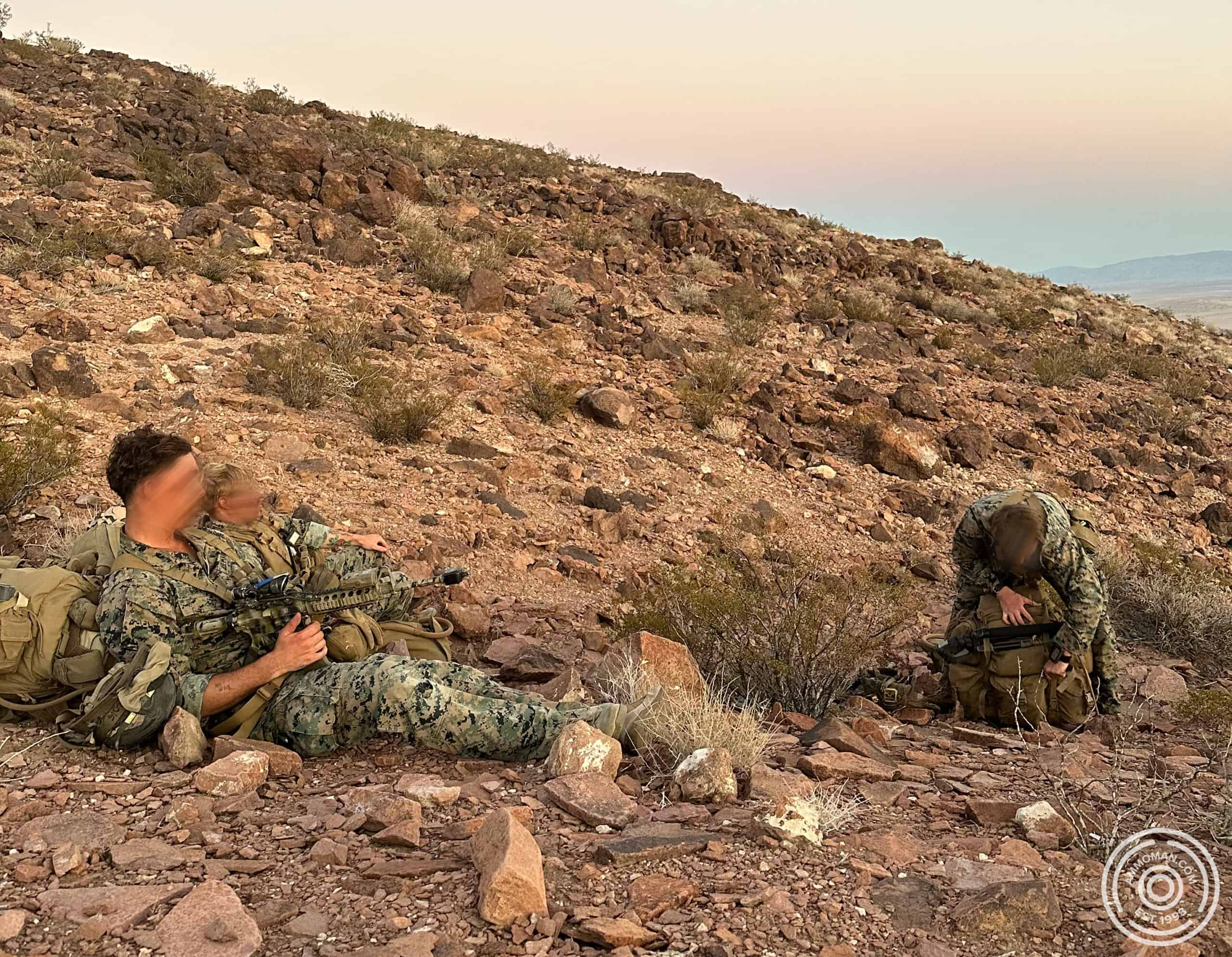
The desert mountains are an unforgiving terrain.
The 14.5″ barrel length has been and is used to great effect against enemy fighters as well as put food on the table for many American hunters. The ability to purchase a legal rifle, and suppress it without making it too unwieldy, and use a mid length or carbine length gas system reliably, the 14.5” barrel length is a king of versatility for general purposes.
Military Uses of the 14.5-Inch Barrel
While Marines did clear Fallujah with M16A4s, they were simultaneously able to be tactically superior in Afghanistan with M4A1s. The 14.5” offers superior maneuverability throughout both environments while being able to engage targets out to a range that most people don’t have the ability to regularly practice shooting at. Although it doesn’t match the full velocity of a 20-inch barrel, a 14.5-inch barrel can still achieve around 2,800-2,900 fps with a 55-grain 5.56 NATO round.
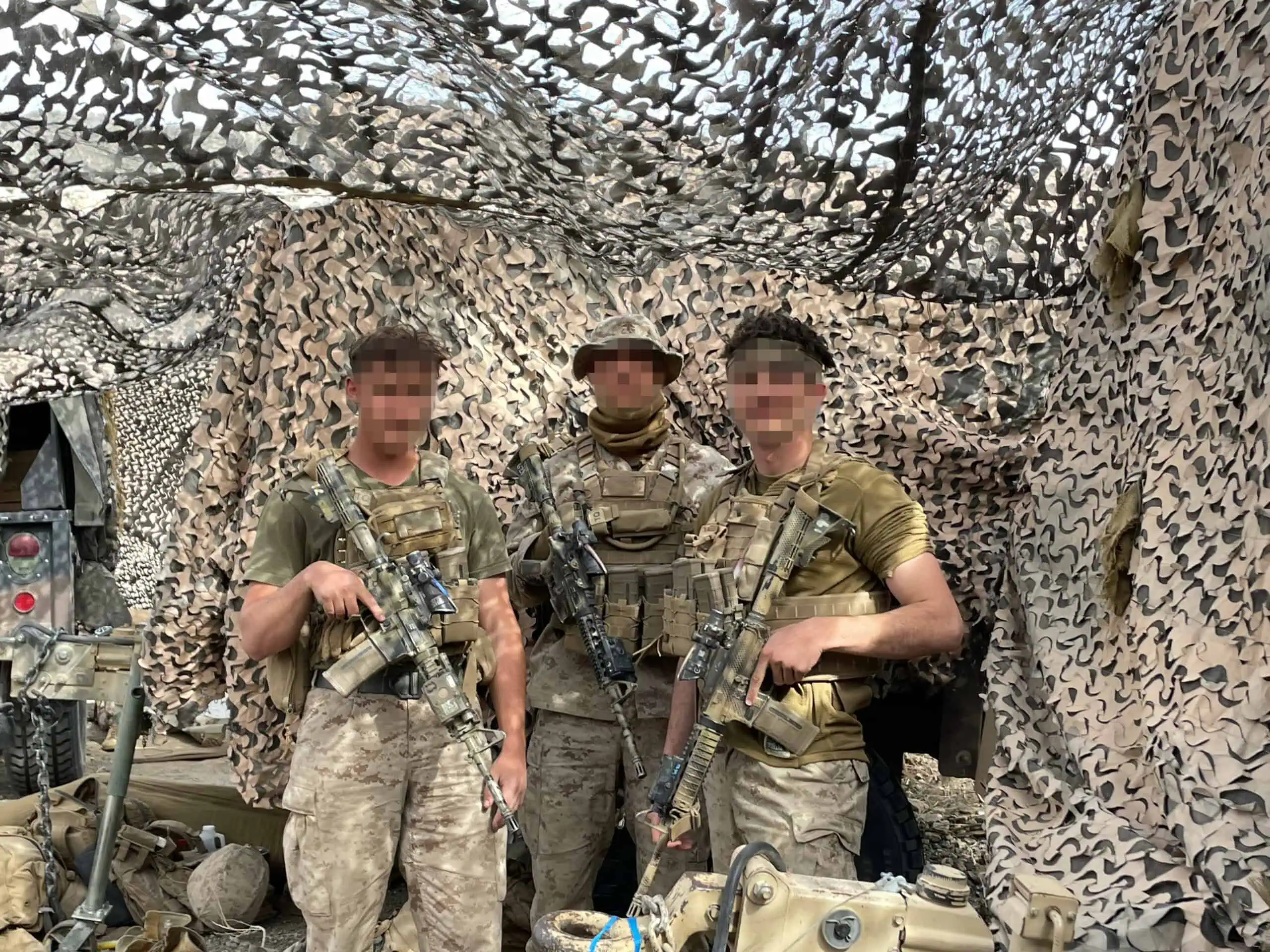
Marines with 14.5″ Colt M4’s during a training exercise.
Keeping in mind that from a military perspective, the intended effect of engaging a target is to get them to stop shooting and remove them from a fight. Suppressive effects of a 5.56 round from a 14.5” can easily get an enemy to stop firing and take cover from a longer distance until they’re able to be closed with and eliminated.
This can be practically demonstrated by the US Marine Corps annual rifle qualification. This qualification is performed at ranges from 15-500 yards. Being a Marine myself (Tyler), there is some bias, but I feel the M4A1 Carbine with a Trijicon ACOG performs flawlessly.
Civilian Uses of a 14.5-Inch Barrel
Things change if you are spending your own money on a general purpose rifle. Whether for shooting proficiency, training small unit tactics (SUT), taking courses, or general home defense, you want to ensure you have something that can fill each of those roles reasonably well.
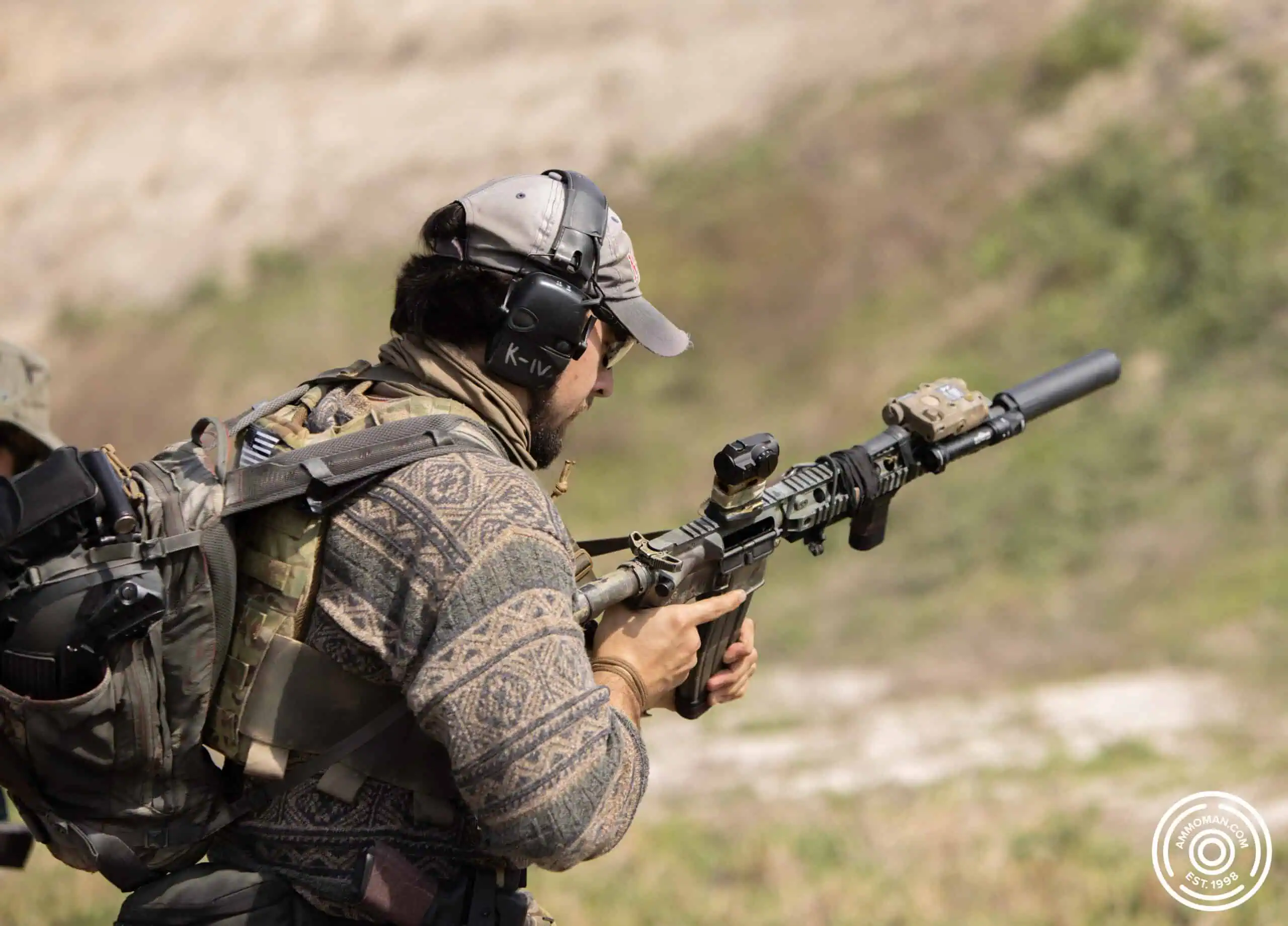
Kenneth performs a reload during rifle training in Texas.
The 14.5” might be the perfect middle ground for you. This length provides plenty of space to mount helpful accessories like a light, sling or suppressor without getting too long to maneuver. In the case of home defense or other general use, a 14.5-inch rifle is more than capable both in optimizing the cartridge as well as remaining a handy platform.

